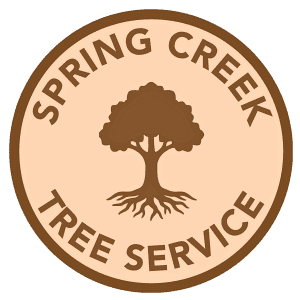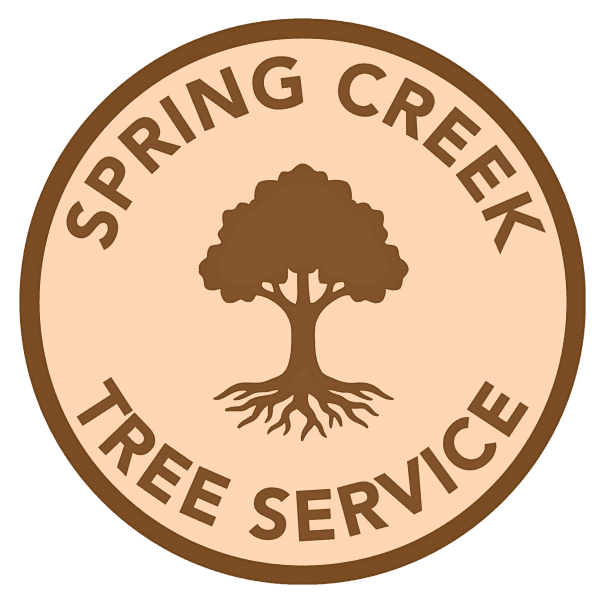Frequently Asked Questions
Do you offer free estimates?
Yes, we provide free, no-obligation estimates and consultations for all of our services.
Is Spring Creek Tree Service insured?
Yes, we are fully insured with general liability and workers’ compensation insurance to protect both our team and your property.
What is the best time of year to prune my trees?
The ideal time to prune most trees in our area is during their dormant season (typically fall and winter). Pruning during this time reduces stress on the tree and minimizes the risk of attracting pests or diseases. This is also the best time to plant trees!
Why do my trees need fertilization?
Trees in urban environments often don’t have access to the same nutrients as those in a forest. Deep root fertilization delivers a custom blend of nutrients directly to the tree’s root system, helping it fight off pests and diseases and promoting vigorous growth.
How can I tell if my tree is healthy?
A healthy tree will have a full, vibrant canopy with no dead or discolored leaves. The trunk and branches should be free of cracks, soft spots, and excessive insect activity. If you have any concerns, a professional arborist can perform a health assessment.
What is "lion's tailing?"
This is an aggressive pruning method where all the inner branches are stripped from a tree, leaving only a tuft of foliage at the end of the limbs. It makes the tree structurally weak and susceptible to sunscald.
Is it okay for my tree service to use climbing spikes?
Climbing spikes (gaffs) should only be used for tree removals. They leave puncture wounds in the tree’s bark that can provide entry points for pests and disease.
How do you decide if a tree needs to be removed?
We recommend removal for trees that are dead, diseased, structurally compromised, or pose a significant risk to people or property. Our arborists can assess the tree’s condition and help you make an informed decision.
Can you help me choose the right tree for my property?
Absolutely. We will conduct a thorough site evaluation, considering your soil type, sunlight exposure, and available space to recommend a tree species that will thrive on your property.
What areas do you serve?
We are based in Tomball, Texas, and provide expert tree care services to the entire Northwest Houston area, including Tomball, Hockley, Magnolia, Spring, Cypress, as well as parts of Montgomery, Conroe, and Waller.
What is the difference between trimming and pruning?
Trimming is typically done for aesthetics and clearance (more like a haircut), while pruning is a more technical, health-focused process involving specific cuts to improve a tree’s structure and health (more like surgery).
What are ANSI A300 standards?
ANSI A300 standards are the industry’s official guidelines for tree care. They cover everything from proper pruning cuts and cabling to fertilization and planting, ensuring that the work is done in a way that promotes a tree’s health and safety.
How often should I fertilize my trees?
The fertilizer we use is designed to release slowly, providing a full year of nourishment. For best results, we recommend a professional deep root fertilization once per year (typically in the winter – to support root structure before the growing season).
What is "tree topping," and why is it bad?
Topping is the severe cutting of large limbs back to a stub. It’s a harmful practice that stresses the tree, leaves large open wounds, and leads to the growth of weak, unstable branches that are prone to failure.
What are heading cuts, and why are they so bad for trees?
A heading cut is a type of pruning cut that removes a branch or limb back to a smaller, lateral branch or bud that isn’t large enough to sustain the cut. This is a common mistake made by inexperienced companies. Heading cuts are problematic because they can severely stress a tree and create a hazardous situation. The cut triggers a rush of weak, new sprouts, often referred to as “water sprouts” or “suckers,” that grow in a dense cluster right below the cut. These sprouts are poorly attached to the parent branch, making them prone to breaking off easily in high winds, storms, or under the weight of ice and snow. This practice also creates a large wound that the tree cannot properly compartmentalize, leaving it vulnerable to decay and disease.
Can you save a tree that has been damaged in a storm?
In many cases, yes. We can often save storm-damaged trees by carefully removing broken limbs and performing structural pruning to help the tree recover and restore its form.
Do you grind the stump after removal?
Yes, we offer professional stump grinding as a separate service to completely remove the remaining stump and its root flare, leaving the area ready for replanting or other landscape use.
Do you guarantee your tree planting services?
We stand by the quality of our planting. While we cannot guarantee the survival of a living organism, we perform every planting to the highest standards and provide you with a detailed care guide to ensure your new tree has the best possible start.
QUICK LINKS

